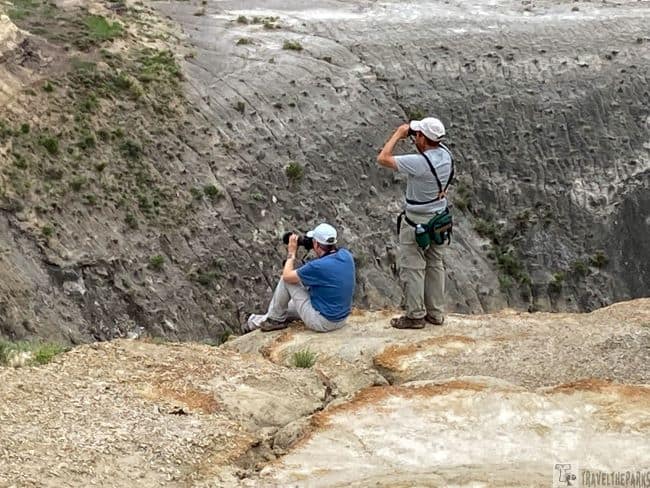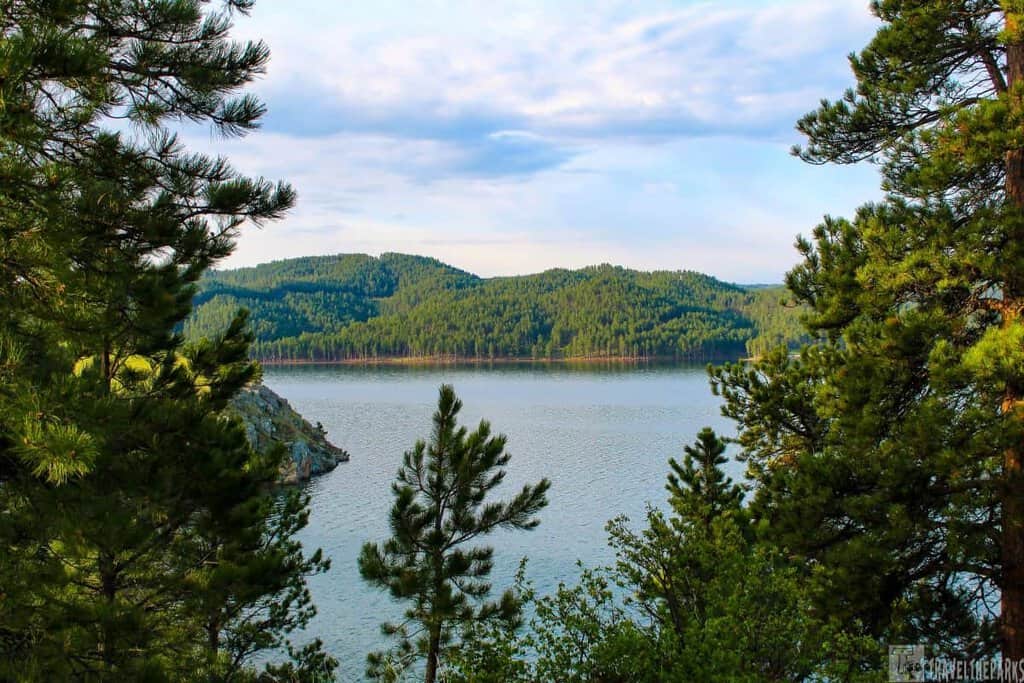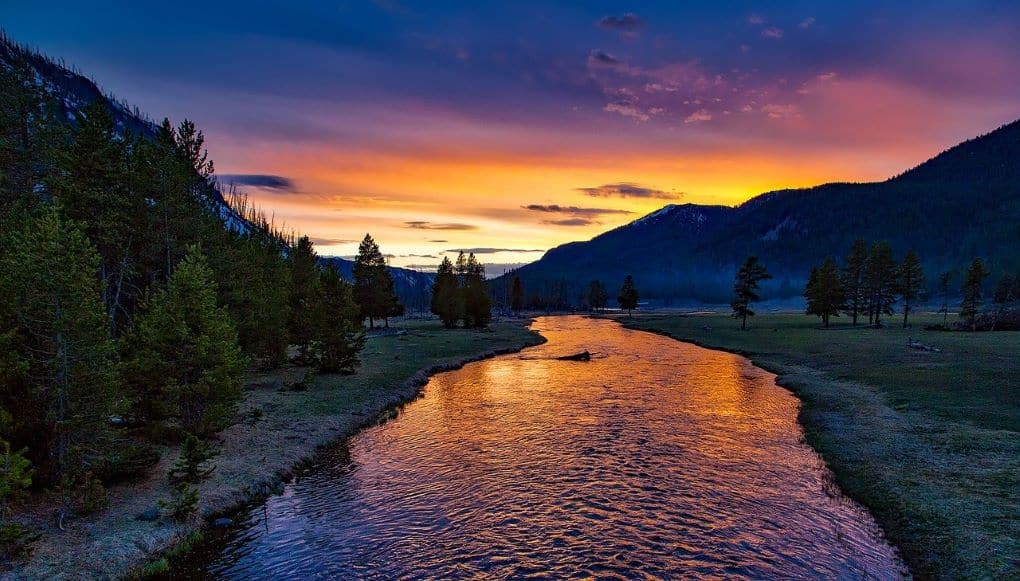Embarked on a summer road trip through memorable Dakota travel experiences. When planning your itinerary, don’t miss these 8 great destinations in the Dakotas. A captivating tour of legendary memorials, national parks, and off-the-beaten-path gems that capture America’s heartland. From the granite-carved faces of Mount Rushmore to the surreal Badlands, these eight destinations promise something more than just a check mark on your bucket-list.These places offer genuine experiences that leave lasting, unforgettable memories. While the South Dakota Black Hills command most of the spotlight, the Great 8 traverses both North and South Dakota. Offers bison-studded grasslands, sacred Native American monuments, and other stunning views blending adventure, history, and wonder. This tour of the Dakotas’ highlights will leave you yearning for your next visit.

During our nine-day Midwest road trip through the Dakotas, we discovered why these destinations have become legends. We walked among the fossil beds of the ancient world, looked up at the gigantic Crazy Horse Memorial, and drove through the loops of Custer State Park, where wild herds of bison roamed free. Each stop—a national park, historic landmark, or expansive forest—left an indelible stamp on us. Ready to discover the Dakotas’ Great 8? Let’s begin with the spots that will transform your road trip from ordinary to extraordinary.
This post may contain affiliate links, meaning if you purchase something through one of these links, we may earn a small commission at no extra cost to you! Read the full disclosure policy here.
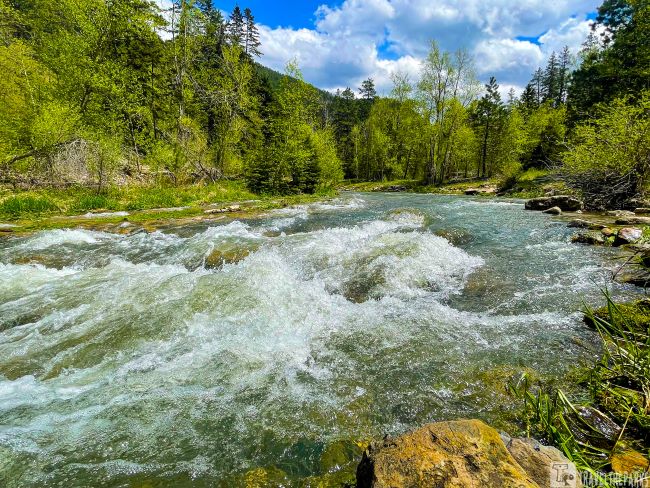
Table of Contents
Getting to South Dakota: Your Gateway to Unforgettable Adventures
South Dakota’s open skies, rolling prairies, and legendary landmarks are the perfect launching pad for exploring the 8 Great Destinations in the Dakotas. Since many of these locations are quite dispersed, I strongly suggest renting a car. The open highway provides an excellent opportunity to appreciate the stunning natural scenery of the Dakotas.
Fly into Rapid City Regional Airport (RAP), the closest major airport to the Black Hills and Mount Rushmore (most expensive flights). For broader flight options, consider Sioux Falls (FSD) or even Denver (DEN) or Minneapolis (MSP), followed by a scenic drive through the Great Plains.
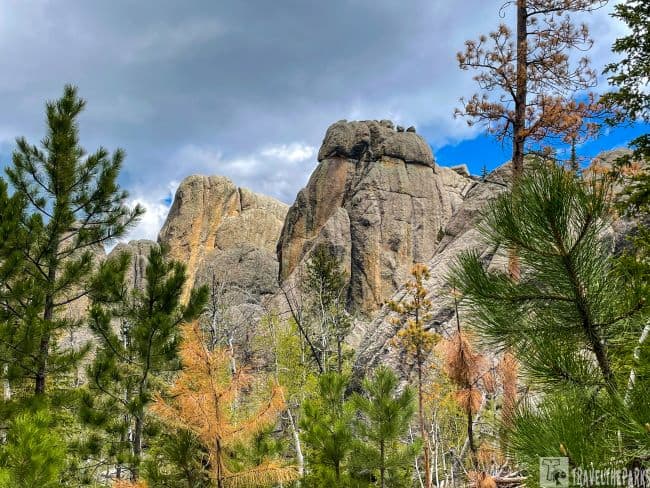
By Car: From the East: Follow the Missouri River’s bends on I-94, with pit stops at historic Lewis and Clark Trail sites. From the Midwest: Cruise west on I-90, passing quirky roadside attractions like the Corn Palace in Mitchell. From the West: Wind through the dramatic Badlands on I-90 or take the slower, soul-stirring route via the Black Hills Parkway.
Pro Tip: You might also find it cheaper to fly into and out of Denver, Colorado, or Billings, Montana. It takes 6 hours to drive from Denver to the Black Hills. It takes 5.5 hours from Billings to the Black Hills.

Pro Tips for Visiting the Dakotas’ 8 Great Destinations
When planning a trip to the Dakotas, consider these pro tips to make the most of your visit to the region’s eight great destinations.
- Best Time to Visit: Plan for late spring (May-June) or early autumn (September-October) for mild temperatures and fewer visitors. Summer is peak tourist season (and heat!), while winter offers stark beauty but limited access to some parks.
- Sunrise/Sunset Magic: Arrive at spots like Badlands National Park or Theodore Roosevelt North Unit before tour buses to shoot golden-hour glory.
- America the Beautiful Pass ($80/year): Covers entry to all 4 national parks/monuments in the Great 8 (Badlands, Wind Cave, Jewel Cave, and Mount Rushmore’s parking fee). Absolutely worth it!
- State Park Pass: Grab a South Dakota or North Dakota annual pass if you’re adding state parks like Custer or Fort Abraham Lincoln to your itinerary.
- Weather Whiplash: Layers are key—think T-shirts, fleeces, and windbreakers. Sudden storms are common in the Badlands and Black Hills.
- Road Trip Essentials: a spare tire, offline maps (cell service is spotty), and refillable water bottles (hydration stations abound!).
- Bison Jams: Keep a safe distance from wildlife—yes, even if that bison would be a great photo opportunity.
- Leave No Trace: Pack out trash, stay on trails, and try not to touch sensitive formations like Badlands’ sedimentary layers.
- Reserve Ahead for Busy Locations: Mount Rushmore Parking: Reserve timed entry times during peak season. Crazy Horse Memorial: Check their calendar for nighttime laser light shows and cultural events.
Know Before You Go: Packing Essentials for Your Dakotas Adventure
When traveling to the Dakotas, it’s essential to prepare for varying weather conditions and outdoor adventures
- Start by packing layers of comfortable, weather-appropriate clothing, including moisture-wicking base layers, a lightweight jacket, and sturdy hiking boots for exploring the Badlands or Black Hills.
- Don’t skimp on sun protection: pack reef-safe sunscreen, UV-blocking sunglasses, and lip balm with SPF.
- If your trip is during the colder months, include warm layers, hat, gloves, and a heavy coat.
- Sunglasses are a must for sunny days, along with a lightweight backpack to carry water, snacks, and a camera for capturing the stunning landscapes.
- For tech essentials, bring a power bank (outlets are scarce in remote areas), a rugged phone case, and offline maps—cell service vanishes faster than a bison herd in Custer State Park.
- Toss in a reusable water bottle (hydration stations abound in parks like Wind Cave) and a collapsible cooler for road-trip snacks.
Pro Tip: Don’t forget: passport cancellation stamps and NPS Junior Ranger programs are available at each of the park’s visitor centers.

Stop 1: Mount Rushmore–Begin Your Dakota’s Great 8 Adventure Here
Our first Great 8 destination is a must-see for all visitors to the Black Hills. Mount Rushmore National Monument is the nation’s most famous monument. Established in 1925, Mount Rushmore is simply iconic. Each of the 60-foot carved granite monuments honors prominent US presidents George Washington, Thomas Jefferson, Theodore Roosevelt and Abraham Lincoln, symbolizing the ideals of freedom and democracy. Sculptor Gutzon Borglum created Mount Rushmore National Memorial near Keystone, South Dakota. Sadly, Gotzon died before the completion of the sculpture. His son Lincoln Borglum, who assisted on the project, finished it after his father died. The famous landmark features interpretive nature trails, a visitor center, Sculptor’s Studio, cafe restaurant and ranger-led tours.

Mount Rushmore is at 13000 Highway 244 in Keystone, South Dakota. The facility is open 365 days a year. It is open 5:00 AM – 9:00 PM from October to March and from 5:00 AM to 11:00 PM between April and September. There is no entrance fee, just an $11 parking fee per vehicle that is good for one year. In the summer, from late May to September 30, enjoy the Evening Lighting Show. is quite impressive. Check here for the current time of the ceremony.
Tip: The park opens at 5am. You literally have the park to yourself early mornings. Perfect for pictures and solitude.

A Walk on the Avenue: Exploring the Magnificent Mount Rushmore
It is breathtaking walking the Avenue of Flags, graced by 56 flags representing all 50 states, the District of Columbia and the territories of Guam, American Samoa and the Virgin Islands. Also represented are the Commonwealths of Puerto Rico and the Northern Mariana Islands. The Lincoln Borglum Visitor Center is directly below the Grand View Terrace. At the end of the Avenue of Flags, it provides the best photographic views of the magnificent mountain. It makes you feel very patriotic.
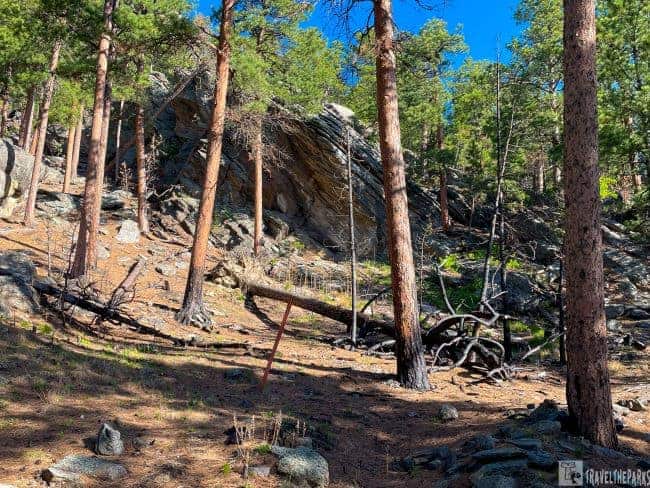
We walked through the ponderosa pine forest on the Presidential Trail for closer views of each of the sculpted faces. You can see the details so much better along the 0.6-mile path that includes 422 steps. Interpretive signs reviewed the history of each of the presidents. Inside the visitor center, you can gain a better perspective of the entire project from inception to completion. We learned that this sacred mountain has not been without controversy. The Great Sioux Nation, including the Oglala Lakota Sioux, holds a profound physical and spiritual meaning for Pahá Sápa (Black Hills). Many saw the desecration of the mountain as another broken promise.
If seeing Mount Rushmore isn’t on your bucket list, it should be! It was absolutely breathtaking. I can still smell the pine scent as if I were still walking through the forest. Getting to see this monument in person is something you’ll never forget.
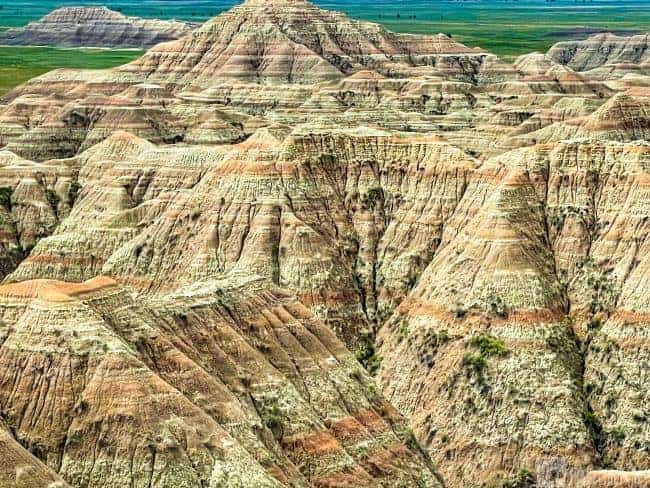
Stop 2: Badlands National Park–Where Time Stands Still on Your Dakota’s Great 8 Adventure
Our second Great 8 destination was Badlands National Park. This is the largest preserved area of mixed-grass prairie in the country.
This area was a hunting ground for the Lakota for 11,000 years, and they called it “Mako Sica,” which translates to “bad lands.” Badlands National Park is most renown for its dramatic layered rock formations. The dramatic rock layers seem to transform with every shift of sunlight. There is nothing better than taking photographs in the park during golden hour, which occurs just after sunrise and before sunset. During these times of day, the Badlands’ buttes, narrow canyons, and rugged pinnacles take on deeper and richer shades of red, yellow and brown.
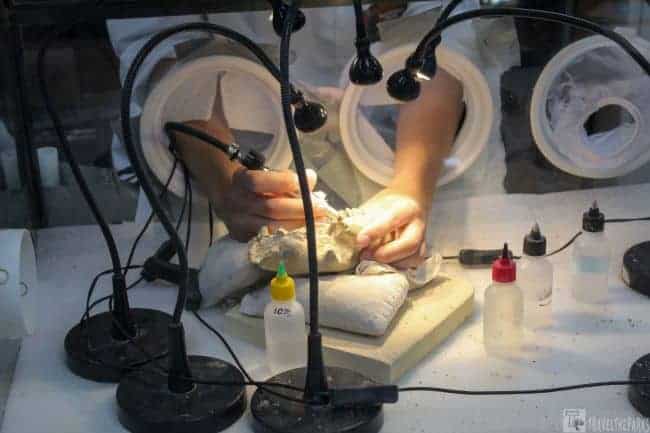
Stop in at the Two Visitor Centers: Your Guide to Exploring Badlands National Park
The Ben Reifel Visitor Center is open daily from 9 AM – 4 PM daily. Paleontologists in the Fossil Preparation Lab remove debris from fossils and prepare specimens for display. Visitors can observe and learn as the staff prepares and catalogs finished fossils.
The South Unit White River Visitor Center is open from 9:00 until 6:00 every day of the week. The National Park Service manages the South Unit of Badlands National Park in cooperation with the Oglala Sioux Tribe.

Driving the Badlands Loop Road: A Scenic Adventure on the Dakotas Great 8
There are 244,000 acres to explore in Badlands National Park. Highway 240, also known as Badlands Loop Road, passes through the heart of the Badlands’ rugged formations. Either Exit 110 in Wall, SD or Exit 131 toward Interior, SD gets you onto the loop road. With several hiking trails and twelve overlooks, the Badlands Loop road is a 25-mile drive. It will take you at least an hour to drive through the park, but we know you’ll want to spend a little more time admiring the scenery.
Unlike the Grand Canyon, the colors here are totally different. Over millions of years, wind and rain, not a river, created this canyon.
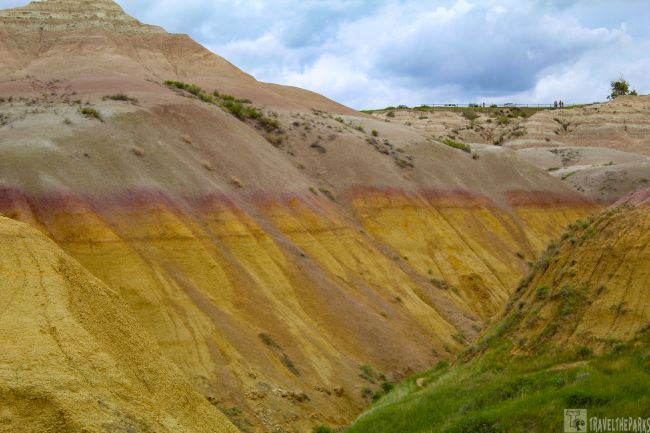
While driving the loop through the park; we made it a point to stop at every viewpoint, taking our time. We had nowhere to be and were not in a hurry. Most visitors encountered wildlife along the road, which caused traffic to slow down. Early summer mornings are glorious for wildlife watching. Best advice: stop to take a hike, snap a few photos, and enjoy the view!
If you are looking for bison, the Sage Creek Rim Road and the Sage Creek Wilderness Area remain the best places to see these magnificent beasts.
Note: While visiting the Badlands, many visitors also stop by Minuteman Missile National Historic Site, which is only 10-miles away from the Ben Reifel Visitor Center.

Stop 3: Wind Cave National Park–A Labyrinth of Stone in the Heart of the Great 8
Our third Great 8 destination is Wind Cave National Park. Established in 1903 by Teddy Roosevelt, it’s one of the nation’s oldest national parks. It’s also the first cave system in the world to be designated a national park. Ranked as the world’s seventh largest and third longest, this cave system grows by about four miles annually as new passages are explored. Admission to enter the park is free, although there are fees for different cave tours.
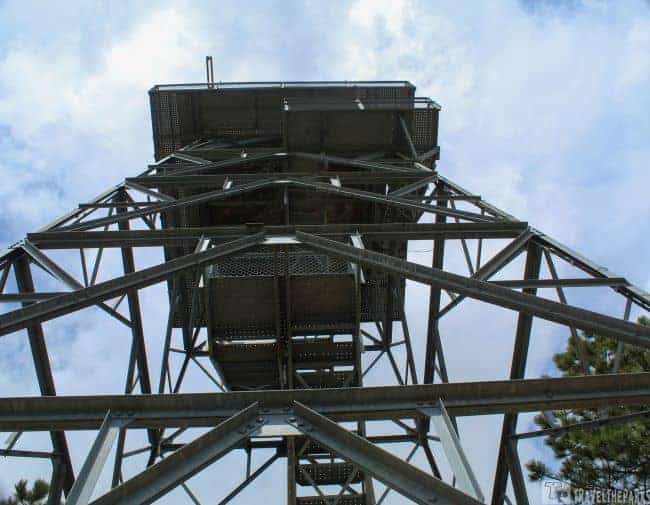
Take a Deep Dive into a Cave Tour: Exploring the Wonders of Wind Cave National Park
In the summer, daily cave tours are Ranger led and require a ticket. Luckily, some tickets are available for advance purchase at recreation.gov otherwise, they are first come, first serve. We purchased our tickets online, choosing the Garden of Eden Tour being the least amount of difficulty (0.33-miles). The one-hour tour requires visitors to climb 150 stairs. The tour descends by elevator 119 feet below the surface.
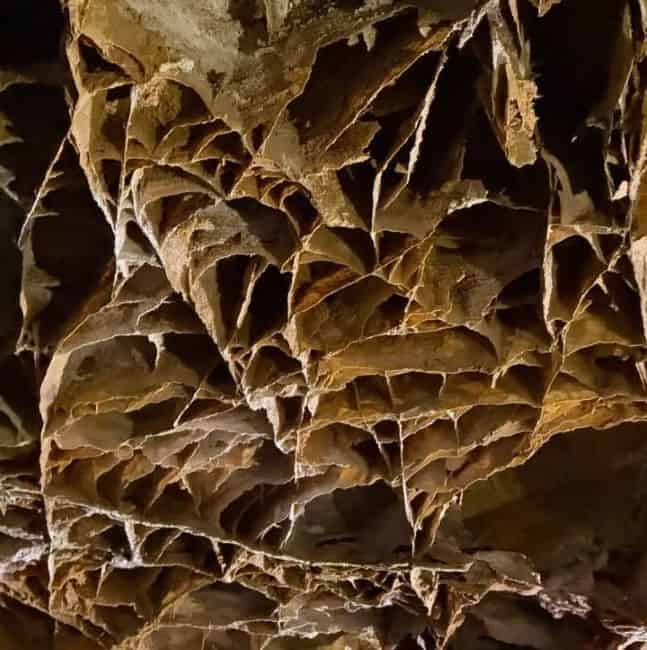
Beginning our tour, the ranger explained, the changing barometric pressure on the surface causes the wind to blow into and out of the cave as the pressure changes. This is how the cave got its name-the Lakota refer to it as Maka Oniye or “breathing earth.” (If you take the Natural Entrance tour, you will see the only opening to the cave system) On this tour you get to see one of Wind Cave’s most notable features is its Boxwork, an intricate geometric formation that resembles lace or a honeycomb. There are other beautiful cave formations, such as cave popcorn and flowstone.
Note: the temperature in the cave is at a constant 54-degrees. You will need to dress accordingly. I suggest long pants, a light jacket or a sweatshirt. Good walking or hiking shoes are essential—sandals, flip-flops, and loose-fitting shoes aren’t permitted.
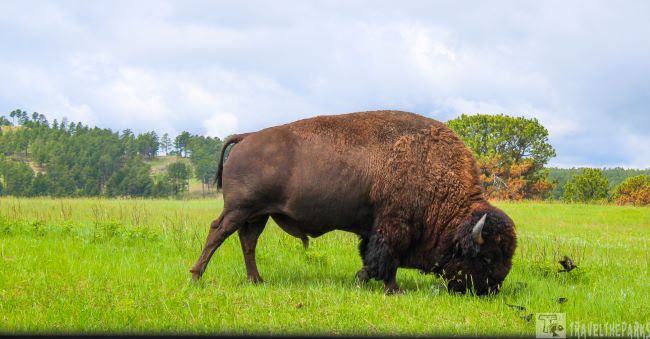
Experience the Prairie at Wind Cave: A Must-Do on Your Dakota’s Great 8 Adventure
Above the ground, Wind Cave National Park is a massive prairie habitat, particularly for bison herds. You can find both bison and pronghorn at Bison Flats along Highway 385. In addition, the park is home to several prairie dog towns.
Looking to get off the beaten path? The 1-mile Rankin Ridge Trail is a short, scenic park loop that reaches the highest point in the park: the Rankin Fire Tower. The view of the mixed grasslands and western forest slopes is breathtaking. On a clear day, you can see all the way to the Badlands.
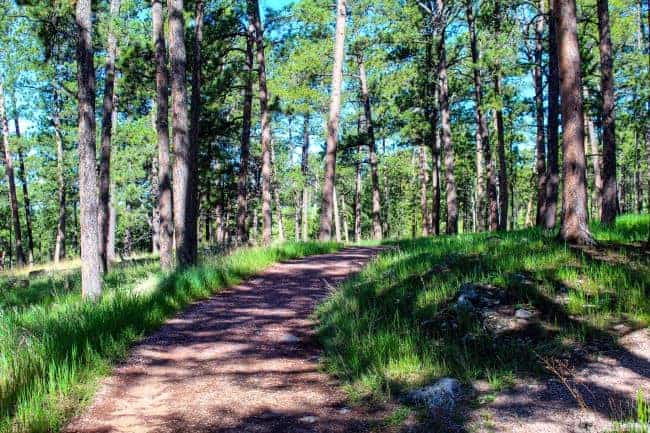
Stop 4: Jewel Cave–A Luminous Labyrinth Beneath Dakota’s Great 8
Our fourth Great 8 destination is Jewel Cave National Monument. It is a few miles west of Custer, South Dakota. President Theodore Roosevelt designated the cave as a national monument in 1908. As the second-longest cave system in the United States, it’s estimated that only 5% has been explored to date. There is no fee to enter the monument, but there is a fee for the different cave tours. Again, Ranger-led tours are the only way you can visit Jewel Cave.

We took the 1.25 hour Scenic Tour making reservations online. It covers 0.5-miles with over 700 descending steps, making it moderately strenuous. The tour elevator descends 200 feet below ground. During the tour, you see ‘soda straw’ stalactites and stalagmites, cave bacon, calcite crystals in many of the rooms and passageways. Our Ranger guide was very helpful and knowledgeable-explaining each of the formations. Near the end of the tour, the ranger will even turn out all the lights so you can experience total darkness. It was really eerie.
There are three hiking trails close to the visitor center at Jewel Cave National Park. Two self-guided trails-Roof Trail (0.25-miles) and Canyons Trail (3.5 miles). Be sure to visit the natural entrance in the historic area of the park. This is where the Lantern Tour starts.

Stop 5: Crazy Horse Memorial–Where a Warrior’s Spirit Rides Eternal
Our fifth Great 8 destination was the Crazy Horse Memorial. It is just a short 40-minute drive from Mount Rushmore. It has taken 70 years for the Crazy Horse Memorial on Thunderhead Mountain to reach its current stage. However, it is still a work in progress, and as it stands, it is rather impressive. Thunderhead Mountain and the Black Hills hold much spiritual significance for the Lakota people. An Oglala Lakota warrior, Crazy Horse, was revered by his people. He and his warriors were integral in the fight against Custer at Little Bighorn. We learned a lot about Crazy Horse on our short bus tour to the base of the monument. (Cost is $4.00)
Visitors to the site can see a smaller replica of what the completed monument will look like outside the museum. From a distance, you can still observe the actual carving of the mountain currently taking place.
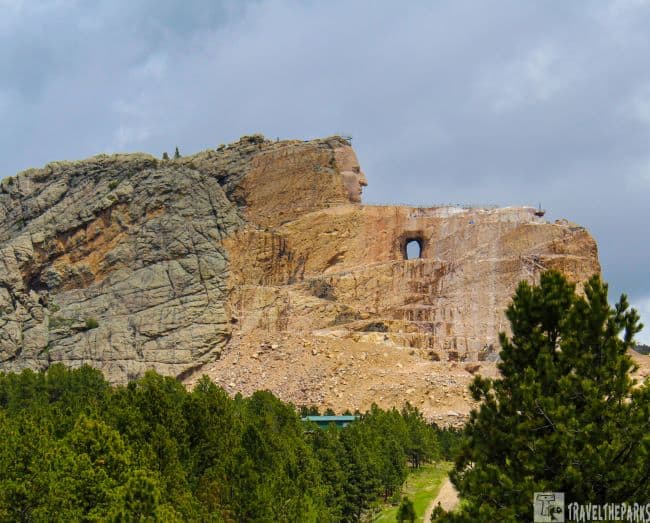
Beyond the Mountain: Engaging with Lakota History at the Crazy Horse Museum & Visitor Center
The Crazy Horse Memorial area also has a museum, a gift shop, a restaurant, and a Native American Cultural and Educational Center. We explored the Sculpture Home and Studio. Here you can see the original log cabin where sculptor Korczak Ziolkowski lived with his family and created many of his earlier works. The Mountain Carving Gallery has detailed interactive exhibits that tell the story of the monument. For us, the most appealing museum is the Indian Museum of North America, which houses documents, photos, and artifacts detailing the history of over 300 Native American nations.

Stop 6: Custer State Park–Where Bison Roam and Trails Whisper on Dakota’s Great 8 Adventure
It doesn’t matter what time of year you visit Custer State Park. has something for everyone. This state park was our sixth Dakota Great 8 destination in the heart of the Black Hills. The park entry fee is only $20 for a pass that is good for up to 7 days. Sylvan Lake is often called the ‘Crown Jewel’ of Custer State Park. We stopped here after a thrilling drive on Needles Highway to enjoy a picnic lunch and walk the Shore Trail through a 1.1-mile loop around the lake. Several hiking trails originate at this beautiful lake.
For many visitors, hiking is one of the top reasons to explore Custer State Park. The most popular trail is Black Elk Peak. It is South Dakota’s highest point, at 7,242 feet. Start early to tackle the 6.5-mile trail leading up to the Mountain Fire Lookout Tower for rewarding views at the top. If you prefer a shorter trail, the Cathedral Spires Trail is a short 3-mile to view awe-inspiring granite needles. We saw lots of wildlife on the trails, including mountain goats.
Interesting fact: they filmed “National Treasure 2: Book of Secrets” here. The incredible granite outcroppings made for a perfect setting.

Dakota’s Great 8 Scenic Byways—Where the Open Road Meets Uncharted Memories
Custer State Park has a few intriguing sightseeing routes over its 73,000-acre expanse. The Needles Highway and the Iron Mountain highway are both part of the Peter Norbeck Scenic Byway. The narrow roadway passes through tight tunnels, offering spectacular panoramic views of granite peaks, rolling green meadows and clear trout-filled streams. However, the most popular scenic drive is the 18-mile Wildlife Loop. The notorious “begging burros” are hard to miss. Although we prefer not to feed the wildlife, the rangers do not prevent visitors from feeding the animals. It is a cool experience to bring a bag of carrots! If you want to see bison, then this is definitely where you will find them. Over 1,500 bison live in the park, freely wandering the grasslands. We also saw bighorn sheep, prairie dogs, deer, and elk along the loop.
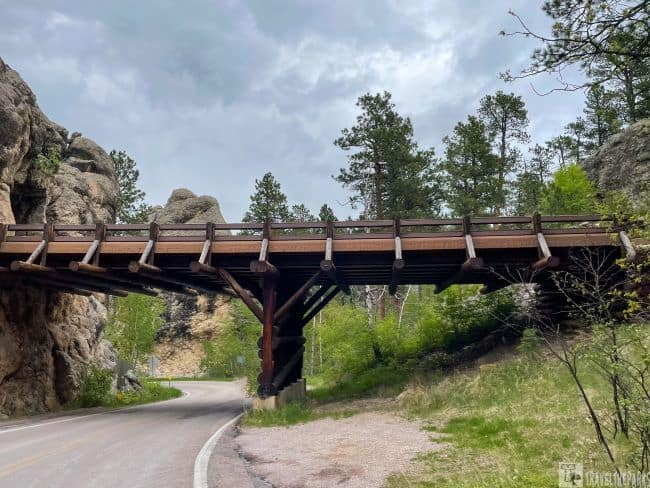
Iron Mountain Road—Where Pigtail Bridges and Tunnels Frame the Great 8’s Grandest Views
Iron Mountain is a stunning drive through the Black Hills. It extends 17-miles from Mount Rushmore to the junction of US Route 16A and State Route 36 in Custer National Park. The road features 314 curves, 14 switchbacks, three pigtail bridges, and three one-lane tunnels. There is one tunnel that is perfectly aligned to frame Mount Rushmore.
They might be better called “Corkscrew Bridges,” which isn’t quite as charming as “Pigtail Bridges.” These unique bridges are found along Iron Mountain Road in Mount Rushmore National Park. Built in 1932, Cecil Clyde Gideon designed them to gain altitude without disturbing the natural terrain. Pretty awesome engineering!

Stop 7: Historic Deadwood—Where Gold Rush Legends Come Alive on Dakota’s Great 8 Journey
The small town of Deadwood is almost inseparable from the legends of Wild Bill Hickok and Calamity Jane. Our seventh Great 8 destination, they designated the entire 1870s gold rush era town a historic landmark in 1961. During those wild frontier days, the town was bustling with prospectors eager to strike it rich. Gambling houses, bawdy bordellos, and saloons sprang up on the mining town’s main street. Lawlessness was rampant. Today, visitors to this boisterous boomtown can experience all the Wild West offered through shootout reenactments that happen on Main Street every day. It is like stepping back into another time. Get a drink at Nuttal & Mann’s No. 10 Saloon, where “Wild Bill” Hickok met his untimely demise. The town’s legendary gunslinger was shot down in the saloon while playing poker.

Mount Moriah Cemetery – Walk Among Legends of the Wild West
Be sure to pay your respects to the dead by making the climb to Mount Moriah Cemetery to find the ultimate resting place of Wild Bill Hickok and Calamity Jane. Consider a guided tour of the original site of the Shasta Rooms brothel or try your luck in the casino. Looking for the real Deadwood, we took a walk through the Adams Museum to learn the history behind the story of Seth Bullock. Be sure to grab a combination ticket that includes the Days of ’76 Museum, celebrating Deadwood’s early pioneers. They exhibit exceptional depictions of early life in the Dakota Territory, real insight into what life is in the 1800s.
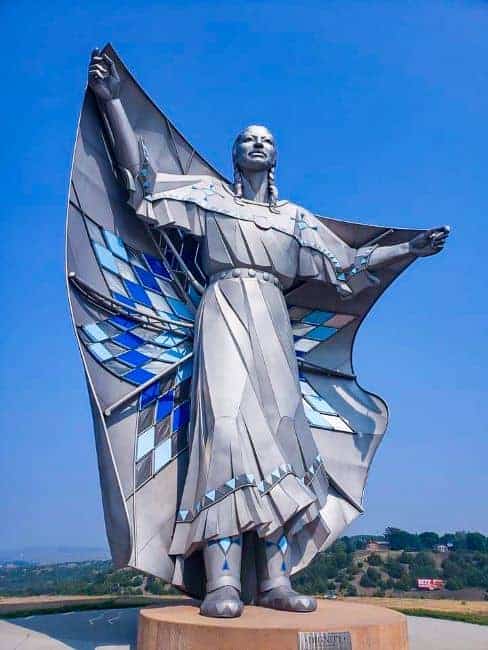
Stop 8: Missouri River—Paddling Through Time on the Great 8’s Final Frontier
Last but not least, our eighth Dakota Great 8 destination is the mighty Missouri River, which weaves its way across this great state. Throughout the Missouri National Recreational River area are many artificial reservoirs that create recreational opportunities for kayaking, fishing, paddle boarding, or swimming to escape the heat of summer. In Yankton, South Dakota, we stopped at the Sacred Heart Cemetery to see the gravestone of Jack McCall. He shot Wild Bill Hickok while he was holding aces and eights (later called the deadman’s hand) at the No. 10 saloon in Deadwood. Here we walked to the Meridian Bridge. It spans the Missouri River between South Dakota and Nebraska. In the heart of America, this is a great place for photos.
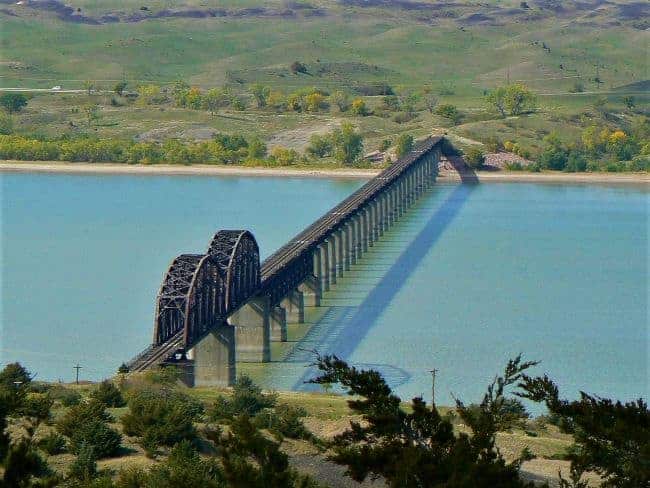
Near Chamberlain, South Dakota, the amazing Dignity Statue stands 50 feet tall and is 32 feet wide. A stunning tribute to Sacajawea, it overlooks the Missouri River. In the rest area, they dedicated a small museum to the 1803 Lewis and Clark expedition.
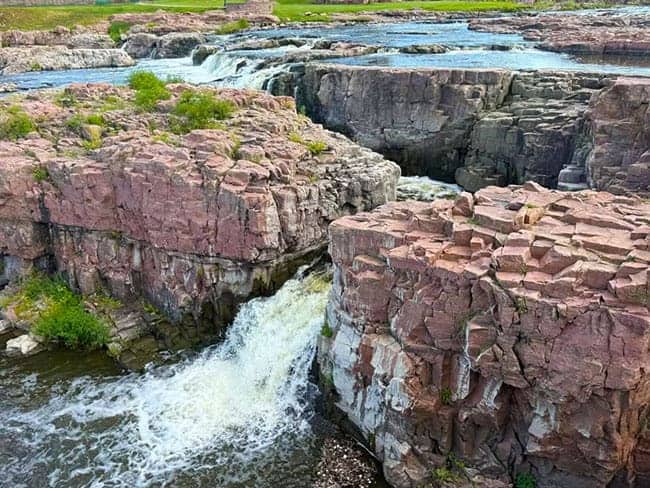
Theodore Roosevelt National Park—Roaming with Wild Horses and Prairie Kings on Dakota’s Great 8
If you have the time, make the journey from Rapid City to Medora, North Dakota, to take in the sights at Theodore Roosevelt National Park. The four-hour drive across the vast prairie is absolutely worth it. The canyon is a delight of color and wildlife. Carved over millions of years by the Little Missouri River. We saw bighorn sheep, feral horses, prairie dogs, bison and more on many of the trails.
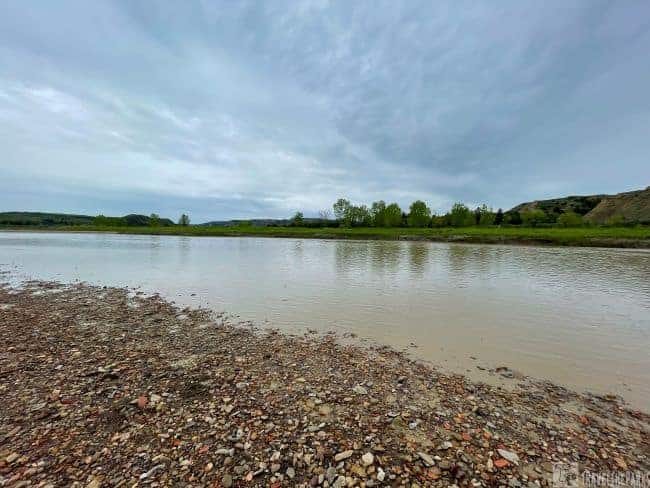
If you are in the Black Hills, consider adding a day trip to see Devils Tower National Monument in Wyoming as part of your itinerary.
From Rustic Cabins to Prairie Retreats: Lodging for Every Explorer on the Great 8 Trail
Lodges and campgrounds are available in many Black Hills communities. The closest town to Mount Rushmore and Custer State Park is Keystone. Hill City, Custer, and Rapid City are also reasonable choices.
Just outside the Black Hills, we stayed at Nemo in an Airbnb, further away from the hustle and bustle. It was cheaper than staying at a hotel. There is also cheaper lodging in Sturgis, Spearfish, Lead, and Deadwood. You can also visit Wyoming’s Devil’s Tower from either of these towns, since they are more centrally located.

In North Dakota, we found a comfy Airbnb in the small central town of Belfield. Medora, Dickinson, and Belfield mostly provide accommodations. Campgrounds are located in town and in both the north and south units of the national park.
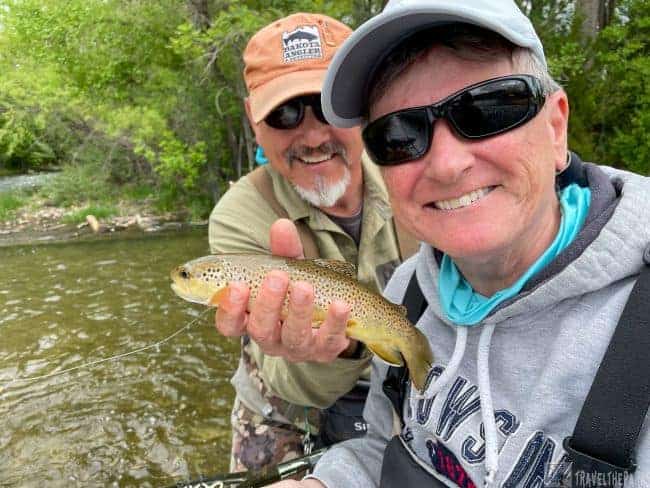
Final Thoughts: Memories of a Lifetime: Exploring 8 Great Destinations in the Dakotas
We hope this guide with 8 great destinations will help you plan a Dakotas road trip, no matter how much time you have. All these iconic destinations are perfect for a road trip if you are traveling through the Black Hills and Badlands of South or North Dakota. Although we don’t leave a trace, we take something with us because each outing leaves us with a distinctive lifetime memory.
What draws you to the outdoors? What memories and traditions will you create? How many of the Dakota’s Great 8 have you visited? Share your stories and memories with us in the comments below!
